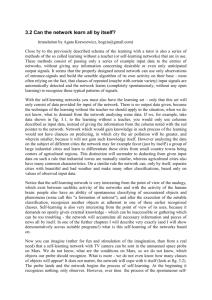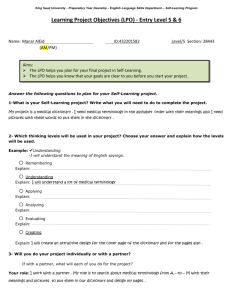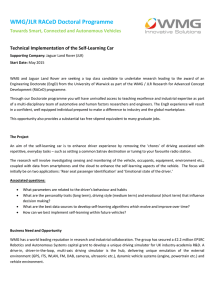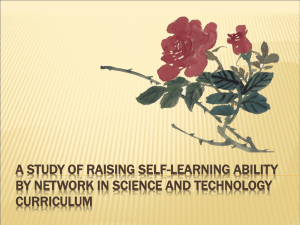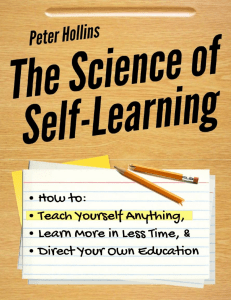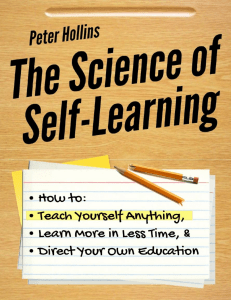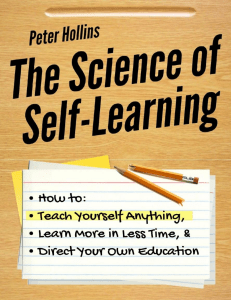A User Guide for Self
advertisement
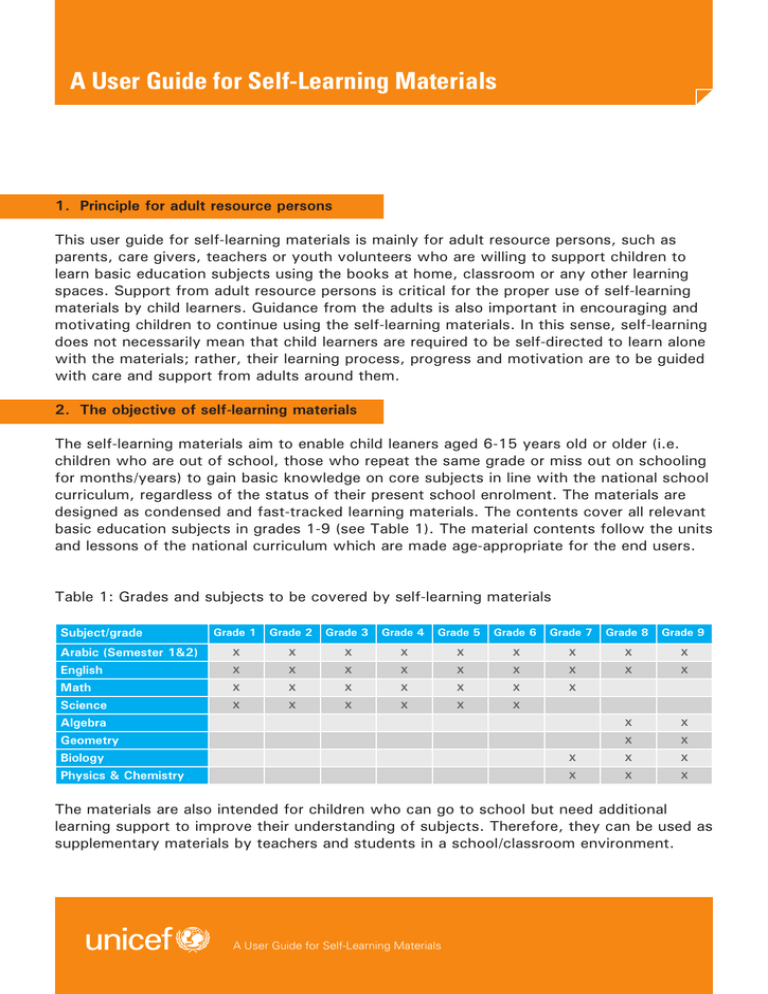
A User Guide for Self-Learning Materials 1. Principle for adult resource persons This user guide for self-learning materials is mainly for adult resource persons, such as parents, care givers, teachers or youth volunteers who are willing to support children to learn basic education subjects using the books at home, classroom or any other learning spaces. Support from adult resource persons is critical for the proper use of self-learning materials by child learners. Guidance from the adults is also important in encouraging and motivating children to continue using the self-learning materials. In this sense, self-learning does not necessarily mean that child learners are required to be self-directed to learn alone with the materials; rather, their learning process, progress and motivation are to be guided with care and support from adults around them. 2. The objective of self-learning materials The self-learning materials aim to enable child leaners aged 6-15 years old or older (i.e. children who are out of school, those who repeat the same grade or miss out on schooling for months/years) to gain basic knowledge on core subjects in line with the national school curriculum, regardless of the status of their present school enrolment. The materials are designed as condensed and fast-tracked learning materials. The contents cover all relevant basic education subjects in grades 1-9 (see Table 1). The material contents follow the units and lessons of the national curriculum which are made age-appropriate for the end users. Table 1: Grades and subjects to be covered by self-learning materials Subject/grade Arabic (Semester 1&2) English Math Science Algebra Geometry Biology Physics & Chemistry Grade 1 Grade 2 Grade 3 Grade 4 Grade 5 Grade 6 Grade 7 Grade 8 Grade 9 X X X X X X X X X X X X X X X X X X X X X X X X X X X X X X X X X X X X X X X X X The materials are also intended for children who can go to school but need additional learning support to improve their understanding of subjects. Therefore, they can be used as supplementary materials by teachers and students in a school/classroom environment. A User Guide for Self-Learning Materials 3. Instruction: the way to use the self-learning books ►► The child learners (end users) are encouraged to: • Read and understand the objective of each unit/lesson first. For lower graders (Grades 1-3), they are encouraged to receive adult support in understanding the objective of each unit/lesson • Start working on the unit/lesson following the guidance in the text. For lower graders, they are encouraged to have necessary support from adults to work on the unit/lesson • Use the space on the text for writing practice • Use the exercise books for additional practice of writing letters and figures, where available • Complete and comprehend each unit before moving to the next unit • Spend enough time every day to work on the books and review the topics and units studied (i.e. one or two hours per day) • Prepare questions when there are unclear things, and ask adult resource persons for clarification. For lower graders, they are encouraged to be asked by adults whether they have any question. • Refer to the textbooks, where available ►► Adult resource persons (i.e. parents, care givers, teachers, and youth volunteers) are encouraged to: • Support children to understand the objective of each unit/lesson of the subject before they start • Provide support to children in practicing reading and writing according to the units/ lessons • Provide children with easily understandable examples and relevant stories to facilitate their subject comprehension • Ask basic questions about the subject to simulate and facilitate their understanding • Enable children to express their ideas and opinions in the process of learning • Make the learning session less theoretical and rote; instead try to flexibly reflect the content of the units to everyday life in order to support children’s understanding and their literacy and numeracy skills • Allow children to make a mistake and learn a lesson from it • Advise children to complete and comprehend each unit before moving to the next unit • Encourage children to have habit to spend enough time in each week to review the topics and units studied • Provide an opportunity for children to exercise and test what they learned from the books to solve the subject questions • Take into consideration the sequence of units and lessons and encourage children to solve the exercises of each lesson in the unit and then solve the unit exercises. Later on, encourage children to do a self-test to measure their understanding of the unit by solving the unit test (if available) • Encourage children to continue learning with the self-learning books to prepare for national exams for certification A User Guide for Self-Learning Materials

